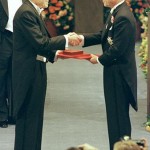FUNCTIONAL THEORY
 Functional Theory
Functional Theory
The functional theory perspective addresses particular issues that are useful for delineating leader behaviours for contribution to organisational efficacy. The leader’s main function is to ensure that the group’s needs are taken care of and so a good leader is someone who contributes to the group’s cohesion and effectiveness. Functional leadership has been used for team efforts as well as for broader organisational structures with auspicious results. The leader is broadly seen responsible for five major functions which are
– monitoring the environment;
– organising the subordinates;
– training the subordinates;
– serving as motivation;
– active intervention in the group’s work as required.
How functional are the leaders in their behaviour?
The leaders are functional in their behaviours in large part except for the precept of training. Leaders motivate different employees from different backgrounds in different ways. For example, the European employees are encouraged by verbal encouragement and the South Asian employees are encouraged by cultivating a personal relationship with the leaders. The leadership actively organises teams as per cultural preferences for example in a recent major overhaul the Japanese workers were assigned the compressor while the Bangladeshi crew was assigned the turbine section. However, greater management support is required to initiate training functions because there is little support for cross cultural training. An example is the training manual for emergency evacuation from air planes which is available in English only while some members of the crew are not able to understand English effectively. If these training materials could be translated into native languages, the crews would be able to understand them better.
Transactional and Transformational Theories
The transactional leader is defined as a leader who has the power to perform particular functions as well as the power to reward and punish the group as per performance. The leader is empowered to lead the group as the group follows the leader’s lead to achieve already set goals in place of compensation. The leader has pervasive authority to evaluate, correct and train subordinates when he feels that productivity is suffering and also rewards the group when productivity aims are being met.
The transformational leader is defined as a leader who motivates the group to perform effectively. An emphasis is placed on communication to convey what the final objectives of the group are. The leader is visible and relies on an established chain of command to achieve objectives. The transformational leader is seen as the leader with a bigger vision while people around him take care of the details. This style of leadership is consistent with visions of growth and progress on a massive scale.
Are the leaders transactional or transformational in their approach?
Most leaders are transformational in their approach though a sizable faction is transactional too as they view the work relationships as temporal and dynamically changing. The constant movement of employees from one station to another mean that leaders view their relationships with subordinates as temporary. This discourages long term relationships. Although this approach is changing but management initiative through counselling sessions would accelerate the change.
Organisational Context for Leadership
An organisation is a conglomeration where various people come together to achieve well defined objectives. The design of an organisation delineates how tasks are subdivided into various sections and departments. The entire work structure is defined. As per Max Weber, the criterion for advancement in an organisation is through either merit or seniority. The employee is compensated through benefits and is protected from the undue influence of seniors higher up in the organisation. The presence of a bureaucratic structure necessitates the appointment of heads that represent authority so as to facilitate the work of the organisation.
The structure of an organisation prompts the emergence of leaders whose personal qualities as well as the situational demands (or a combination of these) bring in followers who accept the offered leadership in one or more overlay structures. There is still disagreement as to the causation behind a leader’s influence on subordinates. Some factions believe that power is the only means while others hold mere influence to be enough.
These roles and statuses are more and more under fire as the organisational structure and framework evolve in the emerging global market norms. The inclusion of cultural diversity ensures that conventionally held roles and statuses in organisations are being forced to change. Moreover, a new breed of leaders can be seen emerging whose methods are unorthodox to say the least. However, to appreciate the situation fully, an investigation of cultural diversity is necessary.
By: Ammarah Khan



